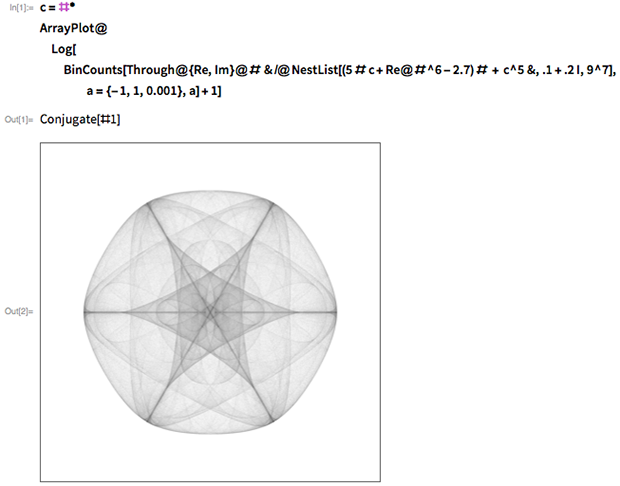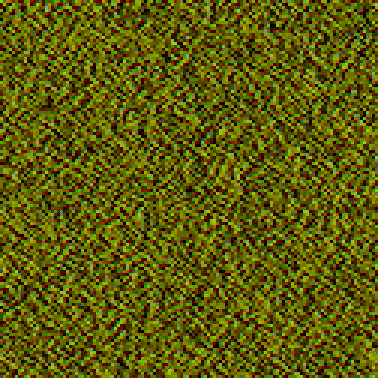The 2016 Wolfram One-Liner Competition Winners
Could you fit the code for a fully functional game of Pong into a single tweet? One that gives you more points the more you take your chances in letting the “ball” escape? Philip Maymin did, and took first prize with that submission in the One-Liner Competition held at this year’s Wolfram Technology Conference.
Participants in the competition submit 128 or fewer tweetable characters of Wolfram Language code to perform the most impressive computation they can dream up. We had a bumper crop of entries this year that showed the surprising power of the Wolfram Language. You might think that after decades of experience creating and developing with the Wolfram Language, we at Wolfram Research would have seen and thought of it all. But every year our conference attendees surprise us. Read on to see the amazing effects you can achieve with a tweet of Wolfram Language code.
Honorable Mention
Amy Friedman: “The Song Titles” (110 characters)

Amy calls this homage to the 2016 Nobel Laureate in Literature her contribution to “the nascent field of Bob Dylan analytics.” She writes further, “I started teaching myself how to code in the Wolfram Language yesterday after breakfast, with the full encouragement of my son and aided solely by Stephen Wolfram’s Elementary Introduction to the Wolfram Language.”
Amy’s helpful son, Jesse, is the youngest-ever prize winner in our One-Liner Competition. In 2014, at the age of 13, he took second place.
Honorable Mention
George Varnavides: “An SE Legacy Re-imagined as a Self-Triggering Dynamic” (128 characters)

![]()


(faster than actual speed)
Order proceeds from chaos in this hypnotic simulation that appealed to the judges’ inner physicists. Points evenly distributed in a spherical volume slowly evolve thread-like structures as they migrate toward target points.
Honorable Mention
Stephan Leibbrandt: “Projections” (128 characters)
![]()
![]()

This impressively compact implementation of a smooth transition between map projections gave the judges an “Aha!” moment as they perceived the relationship between orthographic and Mercator projections. Stephan’s key insight in producing a submission that is graphically engaging as well as instructive is that the structure of a map’s geometric data is the same, regardless of the projection.
Honorable Mention
Manuel Odendahl: “Quilt Pattern” (128 characters)


Manuel writes that he generated this graphic as a quilt pattern for his girlfriend. The judges were impressed by its combination of repetition and variety. No word yet on whether Manuel’s girlfriend has succeeded in assembling the 6,000 quilt squares cut from 645 different colors of fabric.
Honorable Mention
George Varnavides: “Symmetry in Chaos” (128 characters)

Achieving this graphically appealing image required some clever coding tricks from George, including factoring out the function slot c and naming the range a so that it could be compactly reused. Binning the points generated by an iterated function and plotting the log of the bin counts yields the refined graphical treatment in the result.
Honorable Mention
David Debrota: “Transcendental Pattern” (123 characters)
![]()

Starting with three million digits of the transcendental number E, David’s deft application of a series of image processing functions yields this visual representation of the randomness of the digits.
Honorable Mention
Abby Brown: “Happy Halloween!” (127 characters)

A timely entry, given that Halloween—celebrated in the United States with pumpkins—was little more than a week after the conference. Abby takes skillful advantage of the Wolfram Language’s default plotting colors. In a plot of multiple functions, pumpkin orange is the first default color. The second is blue, which isn’t appropriate for a pumpkin’s stem. But by bumping the stem function to third place with Nothing, Abby achieved a green stem and squeaked in just under the 128-character limit.
Honorable Mention
Philip Maymin: “Mickey Mousical” (125 characters)
![]()


Thanks to Philip, you no longer have to travel to Disneyland to get your mouse ears. All you need is the Wolfram Language!
(Dis)Honorable Mention
Richard Scott: “How to Count to One Million in Two Minutes in 100 Easy Steps” (128 characters)


It was slightly embarrassing to have to award a (Dis)Honorable Mention to one of our distinguished Innovation Award winners. But Richard’s helpful two-minute timer drove the judges nuts with its incessant counting and prompted them to warn each other not to evaluate that one.
I must point out its ingenious construction, though, which Richard helpfully illustrated with this image:

Third Place
Shishir Reddy, Alex Krotz: “Face Projection” (104 characters)



The third-place prize went to two of Abby Brown’s high-school students, whom she brought to the conference to present work they had done in her Advanced Topics in Mathematics class (taught with the Wolfram Language). Shishir and Alex made an amusing video transformation that, in real time, pastes the face of the person on the left onto the person on the right, making them virtual twins.
Snapchat, watch out. Here comes Mathematica!
Second Place
Michael Sollami: “Neural Hypnosis” (128 characters)



Michael Sollami took second place with this unusual and visually stunning application of the neural net functionality that debuted in Version 11.
After viewing the animation for a short time, the judges were glassy-eyed and chanting in unison, “Second place! Second place! …”. Dunno, Michael. Bug in your code somewhere?
First Place
Philip Maymin: “Circle Pong” (128 characters)



(5x actual speed)
Philip Maymin’s winning entry packs an impressive load of functionality into 128 characters of code. Not only does it implement a complete and thoroughly playable game of solitaire Pong (“Shorter, rounder and more fun than the original.”), it encourages you to play dangerously by rewarding you with bonus points if you almost let the “ball” escape before swooping in to deflect it.
A brilliant and creative combination of features implemented concisely with complex arithmetic, the game nearly derailed the One-Liner judges, who had to be reminded to stop playing Pong and get back to work.
There were many more impressive contributions than we had time to recognize in the awards ceremony. You can see all of the submissions in this signed CDF. (New to CDF? Get your copy for free with this one-time download.) There’s a wealth of good ideas to take away for anyone willing to invest a little time understanding the code.
Thanks to all who participated and impressed us with their coding chops and creativity. Come again next year!



Comments